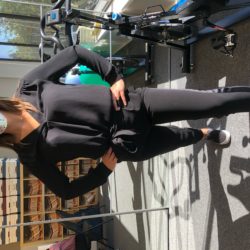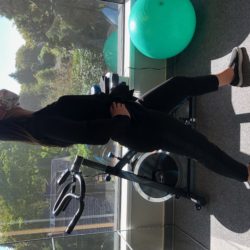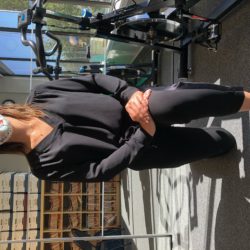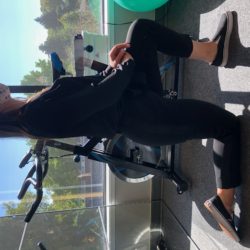By Zeinab Ndow
BKin
The hip flexors are a group of muscles that are important for stabilization of the spine and pelvis, and are used for lifting the knees towards the torso in daily activities such as walking up stairs, running, and walking uphill. Additionally, when we are in a seated position, the hip flexors remain contracted and shortened (because the hips are in a flexed position). Prolonged sitting in this position causes the hip flexor muscle fibres to shorten over time, and this may contribute to lower back pain when these shortened muscles pull on the pelvis and spine, causing the pelvis to tilt forward.
Pelvic Tilts forward = Compression in spine!
Tight hip flexors = Decrease glute muscle use → result: low back and knee pain
The Hip Flexor stretch is an excellent stretch to incorporate into your daily stretching routine. Doing this stretch will help with tight hip flexors experienced from a sedentary lifestyle, or activities where this position is used frequently.
This stretch can be performed in both a standing and kneeling position, and should be held for at least 60 seconds. Try this stretch 2-3x daily.
TIPS in Standing:
Stand with one foot in front of the other, with both feet parallel. If your back foot starts to turn outwards, consider the kneeling version as you may have tight calves and hamstrings and we want to focus on the hips in this stretch!
Ensure your hips are aligned (facing forwards) and not turning outwards or inwards.
Slowly bend your front leg, stopping when you feel a stretch in your back hip. Make sure your front knee does not go past your toes.
Keep your back upright (do not arch or slouch)
TIPS in Kneeling:
Start by kneeling down with your front and back leg at approximately 90 degrees and place a towel under your back knee if kneeling is uncomfortable.
Ensure feet are parallel with each other as in the standing version
Slowly lean forward, stopping when you feel a stretch in your back hip. Make sure your front knee does not go past your toes.
Keep your back upright (do not arch or slouch)



